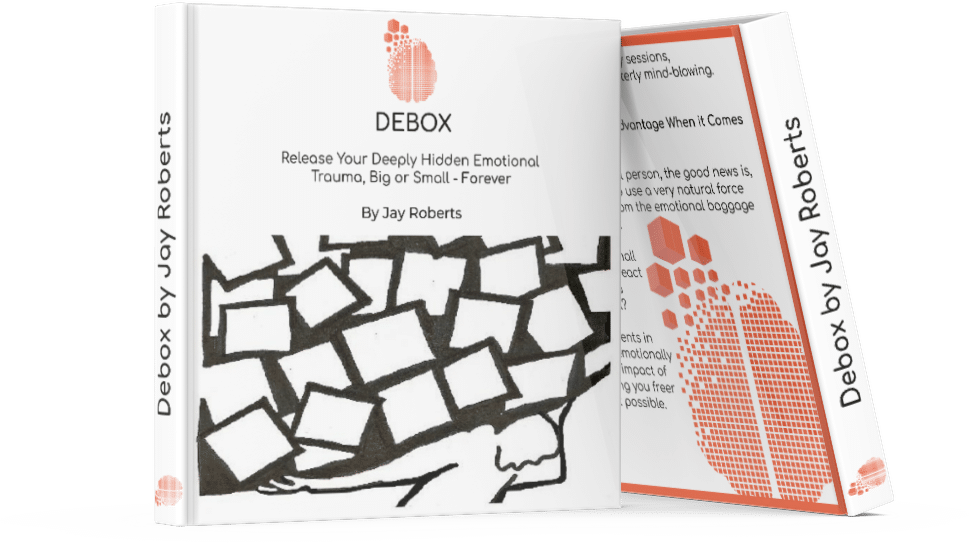Emotional release techniques are a range of exercises that can be done from the comfort of your own home to help you let go and manage emotional distress. These techniques, backed by science, allow you to tap into feelings that may have been buried or suppressed for some time. They can also be used as part of an overall mental health plan to improve wellbeing.
One technique is called ‘grounding’ which focuses on creating a connection between yourself and the present moment by using all five senses in order to achieve emotional stability. Through focusing on sensory experiences such as smell, touch and sound, this technique allows one to feel calmer through connecting with their environment in a mindful way. Another useful tool is ‘journaling’ which helps individuals identify and understand any difficult emotions they may have experienced throughout the day so they can process them in a more constructive manner.
The beauty of these scientifically backed emotional release techniques is that there are no physical objects required; everything takes place within your own mind and body so it’s completely free. All you need is an open-mind ready for self exploration! As well as being totally free, these techniques offer quick results – often after just 10 minutes or less – meaning anyone who needs relief from stress can use them anytime without having to take too much time out of their daily routine. These methods require no specialist knowledge whatsoever making them accessible to everyone regardless of age or ability level.
Whether it’s finding inner peace through breathing exercises or letting go with guided imagery visualizations, these scientifically backed emotional release techniques provide people with tools they need when feeling overwhelmed emotionally but don’t necessarily want (or are unable) to seek professional help right away – empowering individuals everywhere towards better managing their mental health needs at home.
Unlocking the Power of Deep Breathing
Deep breathing is one of the most effective and easily accessible emotional release techniques. It has been used for centuries in many cultures, particularly Eastern practices such as yoga and meditation, to relax the body and calm the mind. But what makes deep breathing so powerful?.
Recent studies have shown that deep abdominal breaths can help activate your parasympathetic nervous system, which helps regulate stress hormones like cortisol. When you take a few moments to slow down and focus on your breath each day, it triggers an automatic relaxation response in your body that reduces stress levels over time. Not only does this technique lower anxiety levels but it also helps improve mental clarity and physical energy levels throughout the day.
One way to get started with deep breathing is by counting each inhale and exhale slowly – start with five seconds per breath then work up from there. This type of mindful practice will not only reduce tension but can also be used as a tool for calming yourself when emotions are running high or life gets overwhelming. Taking time out of your day to just breathe can be incredibly beneficial for overall wellbeing – both mentally and physically – if practiced regularly.
Harnessing the Benefits of Progressive Muscle Relaxation
Progressive muscle relaxation (PMR) is a scientifically backed technique to reduce tension and help people achieve emotional release. This technique involves tensing specific muscles in the body, followed by a period of deep relaxation. When done correctly, PMR can result in improved mental clarity, better sleep quality, reduced stress levels and an overall sense of wellbeing.
To start with this practice at home, begin by finding a comfortable position that allows you to relax your entire body. Once you are relaxed, begin focusing on one area of the body at a time while slowly contracting each group of muscles for around 10 seconds before releasing them again. It is important not to overdo it as doing so may cause fatigue or soreness afterwards. As you move through different areas of the body – from head to toe – take note how each part feels when tense and when relaxed; noting any differences between them can be beneficial for gaining insight into how much tension we typically hold within our bodies without realising it.
Afterwards take some time to become aware of your breath and observe how your physical state has changed since starting the practice; feeling lighter yet more grounded in yourself all at once? Pay attention to any emotions that arise during this process too – simply noticing them without judgement helps us gain further awareness into ourselves whilst allowing those feelings space enough to pass through if they wish to do so.
Exploring Guided Visualization for Stress Relief
Guided visualization is an incredibly powerful emotional release technique that can help reduce stress and tension. It involves using your imagination to relax, creating a sense of peace and tranquility in the body and mind. Visualizing yourself in calming scenarios or places can be very beneficial for reducing stress levels. Guided visualizations are typically led by a certified practitioner, but they can also be done at home with the right guidance.
To begin exploring guided visualization for stress relief at home, start by finding a comfortable place to sit where you won’t be disturbed. Then close your eyes and take several deep breaths to ground yourself into the present moment. Now visualize yourself standing in front of a doorway – this door represents access to inner peace, calmness, relaxation and joyfulness inside of you – open it up. Take some time here to explore what lies beyond this doorway – maybe there’s a beautiful beach scene or rolling green hills? What colors do you see? How does it feel when you stand here? Allow yourself time to fully immerse into these sensations before gently bringing your awareness back into the room again when ready.
When finished with each session make sure to express gratitude for allowing yourself space to practice this form of self-care before slowly opening your eyes again – allowing any remaining positive feelings linger as long as possible throughout the day ahead.
Releasing Tension with Writing Exercises
Writing is a great way to express and process emotions, especially when it comes to releasing tension. It can be used as a form of self-therapy by taking the time to sit down and write about what is bothering you or how you are feeling in that moment. Writing helps us work through our thoughts in an organized fashion, allowing for clarity and insight into our emotional states.
One simple exercise involves writing down your current stressors on paper. By getting these worries out of your head and onto the page, it gives you some distance from them so that they don’t feel quite as overwhelming anymore. This can help you put things into perspective and gain clarity on how best to move forward with tackling those issues. You can also try journaling every day – recording positive experiences as well as negative ones – so that over time, we begin to see our progress more clearly. Doing this regularly has been shown to reduce symptoms of depression and anxiety while increasing feelings of happiness overall.
Another useful technique is stream-of-consciousness writing where there are no rules – just let your thoughts flow freely onto the page without worrying about grammar or structure; no one needs to read this except for yourself. This allows us access into parts of ourselves we may not have even realized were there before which can be incredibly liberating for many people who find themselves stuck in cycles of rumination or worry due to unresolved issues from their pasts.
Connecting with Nature to Restore Balance
Nature has a way of restoring balance and peace in our lives. For centuries, people have turned to nature for solace, comfort, and clarity. There are many scientifically backed emotional release techniques you can do at home to reconnect with the natural world and find peace within yourself.
One such technique is walking barefoot on grass or sand. Being in contact with the ground allows your body to absorb energy from Earth’s surface, which helps reduce stress levels and promote relaxation. You can also try meditating outdoors or simply sitting quietly in nature for a few minutes each day; this helps restore inner calmness as well as connect you with your environment. Studies suggest that time spent outdoors increases cognitive performance, creativity, positive emotions and moods.
Another great way to tap into the healing power of nature is through gardening – even if it’s just tending to some houseplants. Connecting with plants by taking care of them helps improve mental health by promoting feelings of contentment and happiness while reducing anxiety and stress levels. Gardening also provides an opportunity for mindful practice as it encourages us to be present in the moment; something essential for releasing built-up emotion and restoring balance in life.


